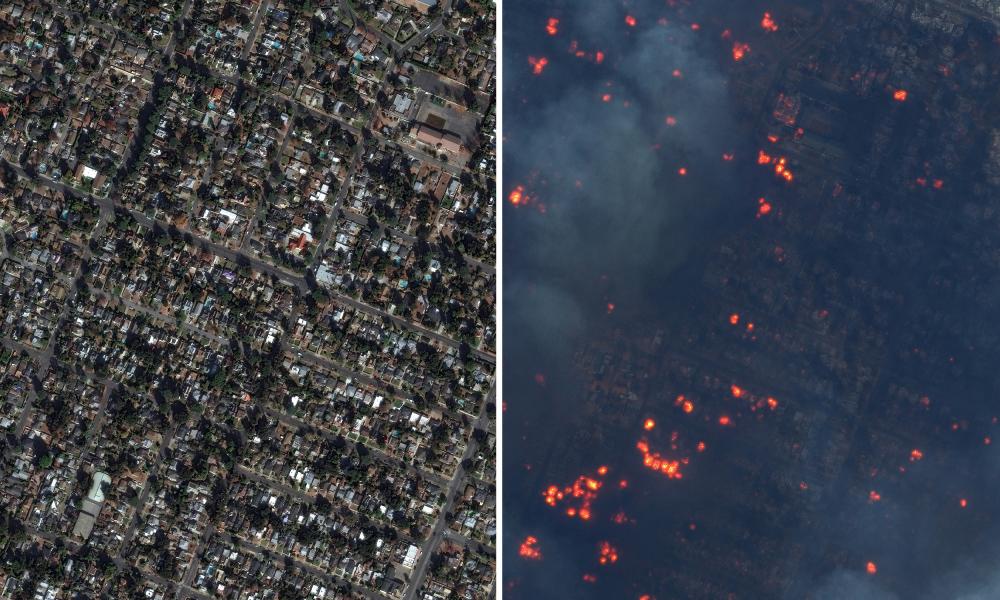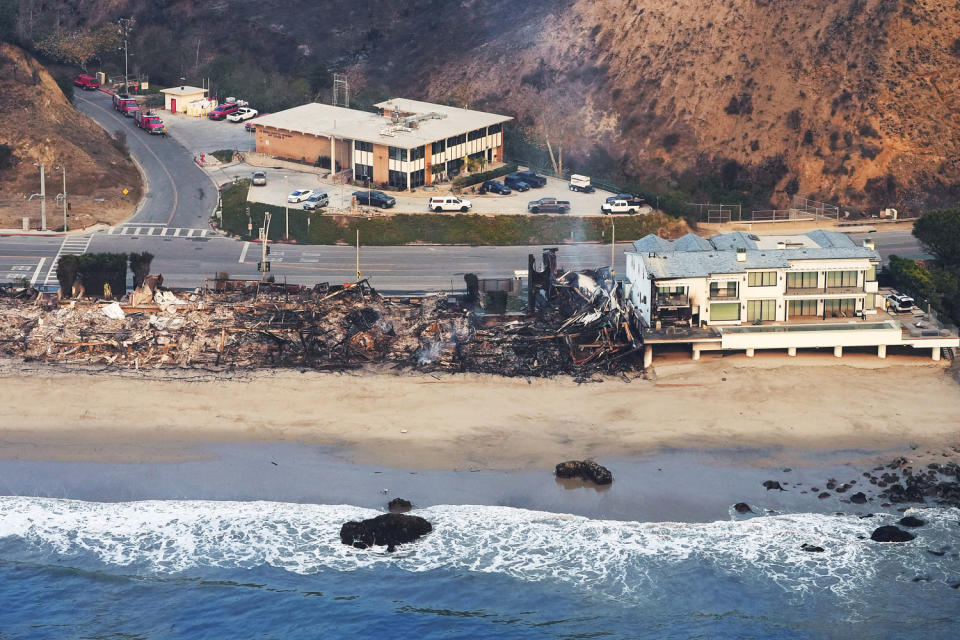
Seven people were killed, more than 10,000 structures destroyed and at least 180,000 residents ordered to evacuate in California as fast-moving wildfires burned around Los Angeles, encircling the city.
On Tuesday, hurricane-force winds blew embers through the air, igniting block after block and destroying an area of land about 45 square miles (117 sq km) over the following days. As of late Thursday, five fires were still raging around Los Angeles, three of them completely uncontrolled.
Satellite images showed the scale of the destruction from the Pacific Palisades fire, which left the coastline along the famous Malibu neighbourhood scorched black and buildings along the water burned to the ground.
Advertisement
Advertisement
In Pacific Palisades itself, more than half a dozen schools had either been damaged or destroyed.
Los Angeles mayor Karen Bass said a new fire, the Kenneth fire, that began on Thursday afternoon in the San Fernando Valley near the West Hills neighborhood, was expected to “rapidly spread due to high winds”.
In Altadena, behind the mountains north of Los Angeles where the Eaton fire took hold, satellite images showed row upon row of charred residential streets, with smoke from the nearby fires in the air. On Wednesday, the streets were filled with ash, with buildings everywhere in flames. By Thursday officials said that they feared 4,000–5,000 structures had been destroyed.
Advertisement
Advertisement
The Pasadena fire chief, Chad Augustin, said the city’s water system was stretched and further hampered by power outages but that even without those issues, firefighters would not have been able to stop the fire as embers blown by the intense winds ignited block after block.
In one image captured by satellite, the red glow of fires burning near East Altadena Drive can be seen through thick black smoke.
Firefighters made significant gains on Thursday at slowing the spread of the Eaton and Palisades fires, though both remained at 0% containment, officials said.
Crews also knocked down a blaze in the Hollywood Hills, allowing an evacuation to be lifted on Thursday.
Advertisement
Advertisement
More in U.S.
Satellite images from Lachman Lane in Pacific Palisades showed that some houses were spared, while others on the same street burned.
The fires struck at an especially vulnerable time for southern California, which has yet to see significant rainfall since the start of the water year in October.
Then came the powerful Santa Ana winds, bringing dry desert air from the east toward the coastal mountains, fanning wildfires while blowing over the hilltops and down through the canyons.
Scientists said the fires, erupting well outside the traditional wildfire season, mark the latest in weather extremes that are likely to escalate further as global temperatures continue to climb in coming decades.
Associated Press and Reuters contributed reporting
EMEA Tribune is not involved in this news article, it is taken from our partners and or from the News Agencies. Copyright and Credit go to the News Agencies, email news@emeatribune.com Follow our WhatsApp verified Channel





